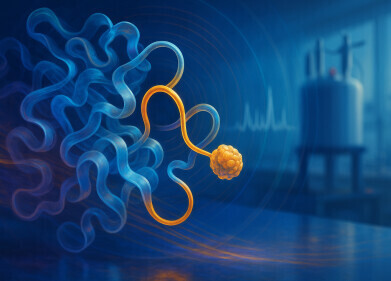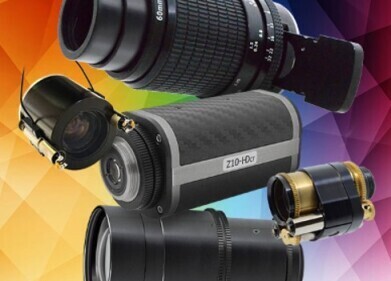Microscopy & microtechniques
Nanoparticle Measuring System Used for Vaccine Characterisation at Lomonosov Moscow State University
Feb 13 2013
The MSU Department of Virology headed by Professor Joseph Atabekov is studying the in vitro assembly of compositions, consisting of artificial plant virus particles and antigens, potentially attractive for vaccines development. Artificial plant virus particles are spherical particles (SPs) generated by thermal denaturation and structural remodelling of helical plant tobacco mosaic virus, a rod-shaped virus with a diameter of 18nm and a modal length of 300nm. It has been found that upon thermal denaturation of TMV, viral RNA is released and becomes degraded whereas viral coated protein is assembled into spherical particles. The size of SPs depends on the initial TMV concentration and particles from 50 to 800nm may be obtained. The group of Professor Olga Karpova has shown that SPs based on TMV are stable and may adsorb a diversity of proteins. Thus, SPs represent a new type of biogenic nanoplatform attractive for binding antigens and antigenic determinants of different pathogens.
Describing the choice of NTA from NanoSight for this work, Dr Nikitin said "It permits us to analyse and control the size, state of aggregation and concentration of artificial plant virus particles and small spherical plant and animal viruses. Furthermore, NTA allows us to see the formation of immunogenic complexes by using the indirect immunofluorescence or immunogold staining methods. The technique provides us with the opportunity to obtain simultaneous information concerning nanoparticle size, state of aggregation, concentration and antigenic specificity in liquid. This is particularly important for vaccine characterisation and standardisation.
"Previously, we had used transmission electron microscopy (TEM) and dynamic light scattering (DLS) for sizing SPs, isometric viruses and virus-like particles. To detect the formation of immunogenic complexes we use immunogold TEM and immunofluorescence microscopy. For us, the main advantage of NTA over these microscopic methods is that there is no need to fix and dry the object on a supporting film which could lead to morphological deformations and aggregation of nanoparticles. NTA provides the means for analysis of samples in liquid in real-time and makes measurements particle by particle.”
Digital Edition
Lab Asia Dec 2025
December 2025
Chromatography Articles- Cutting-edge sample preparation tools help laboratories to stay ahead of the curveMass Spectrometry & Spectroscopy Articles- Unlocking the complexity of metabolomics: Pushi...
View all digital editions
Events
Jan 21 2026 Tokyo, Japan
Jan 28 2026 Tokyo, Japan
Jan 29 2026 New Delhi, India
Feb 07 2026 Boston, MA, USA
Asia Pharma Expo/Asia Lab Expo
Feb 12 2026 Dhaka, Bangladesh
.jpg)
-(2).jpg)
















